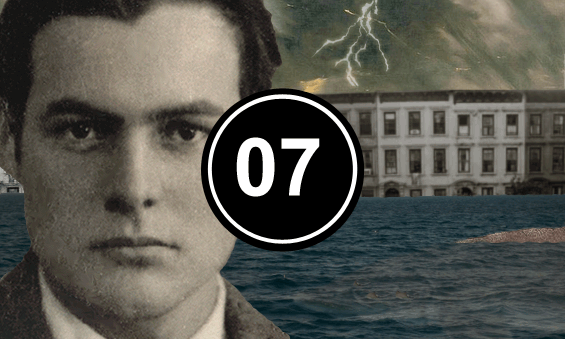 |
| Ernest Hemingway in 1923 |
I sort of get the impression that a lot of people who met him probably wanted to punch Ernest Hemingway in the face at one point or another, but Torontonian author Morley Callaghan was one of the lucky few who actually got to do it.
Apparently, the story goes something like this: The two writers became friends in Toronto in the '20s, while Hemingway was living on Bathurst Street and they were both working for what was then called The Toronto Daily Star. It was as a foreign correspondent for the Star that Hemingway had first lived in Paris and since, drunken lout that he was, he hated the then-still-more-than-a-little-bit-uptight Toronto, it wouldn't be long before he headed back to France
Callaghan was now living there, too, and one night the pair of reporters was hanging out with F. Scott Fitzgerald, having an argument about boxing. Hemingway and Fitzgerald thought Hemingway was good enough to be a professional. Callaghan had his doubts. To settle the argument, Fitzgerald convinced the two to spar while he served as audience and timekeeper.
As it turns out, Hemingway could not have been a professional boxer. Callaghan, though smaller and an amateur himself, was better. Not only did he get to punch Ernest Hemingway right in the face, he knocked him down to the mat.
A moment later the legendary friendship between Hemingway and Fitzgerald was over. Fitzgerald, who had gotten caught up in the action and lost track of the time, exclaimed, "Oh, my God! I let the round go four minutes."
“All right, Scott,” Hemingway shot back. “If you want to see me getting the shit knocked out of me, just say so. Only don’t say you made a mistake.”
And that was it; he never forgave Fitzgerald. He was still bitching about it in the last letter he wrote before he killed himself, nearly 40 years later.
Callaghan wrote about it too, in his memoir
, That Summer In Paris. And, as if this story hadn't already filled its quota of asshole writers, that memoir was then reviewed in
The New York Review of Books by Norman Mailer. The review was called "Punching Papa" and you can read it online right over
here.
| This post is related to dream
07 The Lake Sturgeon
Ernest Hemingway, 1923 |






